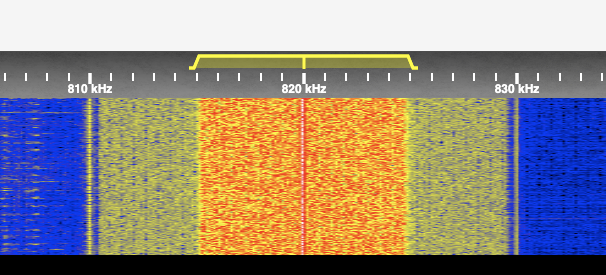All-digital AM has the potential to significantly aid in the revitalization of the AM service. So says the draft order that the Federal Communications Commission is slated to vote on at its Oct. 27 meeting. The idea of allowing a voluntary station-by-station conversion has been met with broad support from many in the industry, and the draft order (MB Docket Nos. 19-311) shows the FCC has largely relied on several field tests conducted to determine how all-digital AM could not only help broadcasters but also listeners.
One requirement that the FCC has included in its proposal is the establishment of a 30-day waiting period after the station files a Form 335. Once those details are submitted, a station would not be able to make any changes to its planned technical operation. The 30-day notice would also be used to alert listeners with required on-air messages that, without a digital receiver, they will no longer be able to hear the station. But in terms of what those listener notices must say, the FCC is deferring to stations saying broadcasters have a “strong incentive” to promote the change using on-air and website announcements.
The draft order also includes a number of technical guidelines, mostly geared toward preventing digital AMs from interfering with other analog stations. That includes applying the existing analog power limits to the digital broadcasts. But the FCC is giving stations flexibility when controlling that power, saying it is an “evolving and highly technical area” of radio engineering.
Attorney David Oxenford said it appears the FCC isn’t concerned all-digital AMs will lead to more inference than currently exits with analog stations. “If interference does occur, the FCC will look to stations to resolve such interference between themselves, with FCC filings only required where there is a reduction in the power of the primary sidebands where the audio programming is transmitted. Only where the parties cannot voluntarily work out interference issues will the FCC get involved in mediating these disputes,” he wrote in a blog post.
To date only Hubbard Radio’s adult alternative “The Gamut” WWFD, Frederick, MD (820) has extensively tested AM multicasting, but as more stations switch to digital, the FCC is leaving open the door to further testing. Just one channel will need to be free, meaning some AMs could find new revenue-generating opportunities in their metadata.
Full article:
http://www.insideradio.com/free/inside-the-fcc-s-plan-to-allow-ams-to-switch-to-all-digital-broadcasting/article_8481a410-0c51-11eb-91b5-3fc202f09b89.htmlFYI - WWFD 820 is a local here. And it causes considerable QRM to adjacent 810 and 830 kHz.




